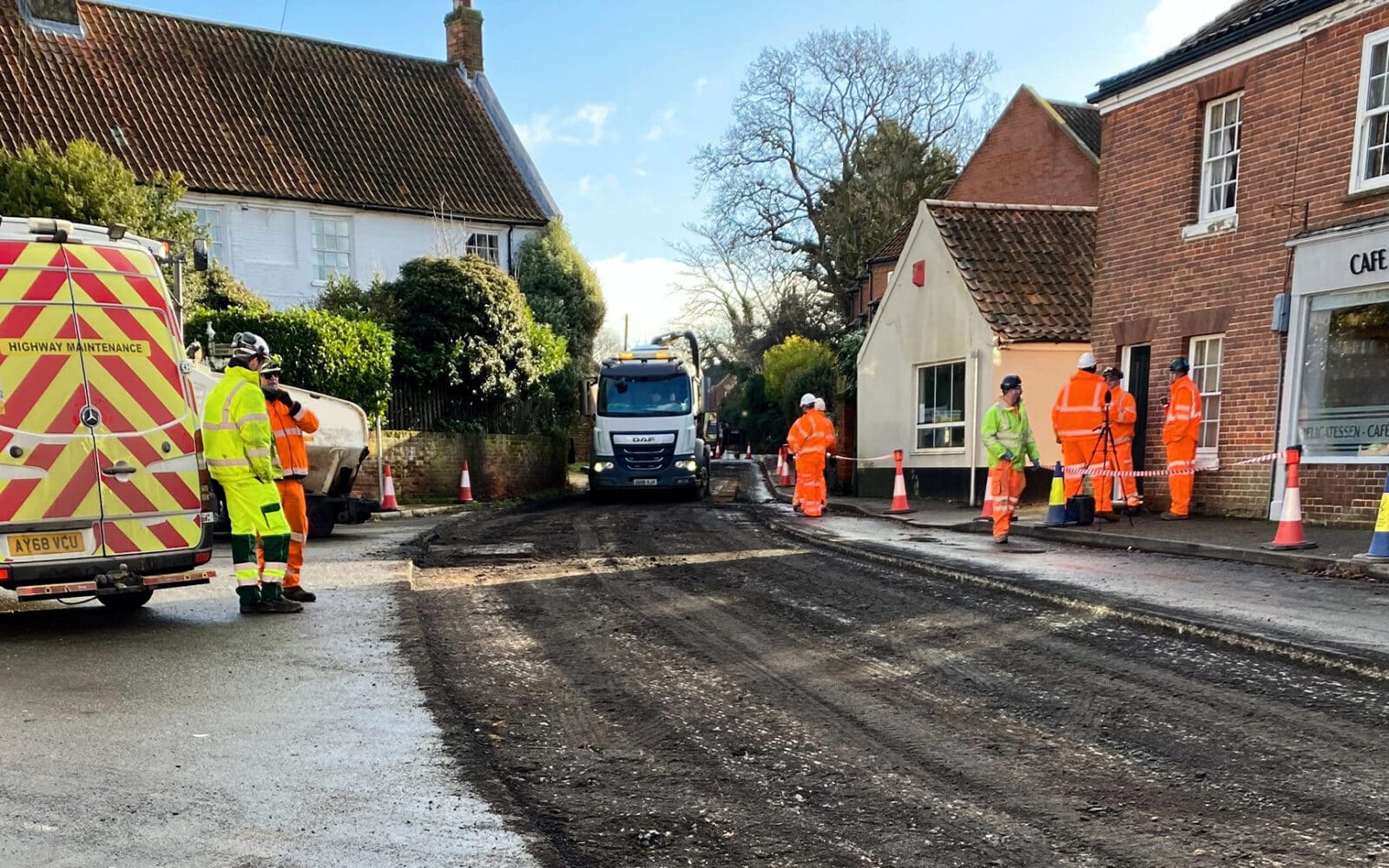PROJECT DESCRIPTION:
This project is part of a wider series of works to facilitate the construction and operation of the onshore infrastructure elements for Ørsted’s Hornsea Three Offshore Wind Farm. This nationally significant scheme requires several onshore elements to be constructed before the entire project can be connected to the national grid. This includes a new substation and a cable route (approximately 55 km) to be laid from the North Norfolk coast to the southeast of Norwich. Many of these elements are taking place in and around historic Norfolk villages, one of which is Cawston.
Cawston is a small historic village situated alongside the proposed cable route. Concerns were raised early in the programme that the proposed route for the cable would result in an increase of traffic on Cawston High Street and that the road remedial methods including planing due to take place could result in significant vibration, potentially causing damage to properties, some of which were Grade II-listed, along the road. The construction works required, along with agreements set with the local parish Council prior to start on site, meant that all works needed to be completed as quickly as possible. To help alleviate these concerns, our Acoustics team reacted decisively to ensure appropriate calculations, monitoring and mitigation measures were in place.
Awards:
- Winner: 2023 Association of Noise Consultants Award – Environmental Noise: Infrastructure
WHAT WE DID:
CONSTRUCTION STAGE
- Noise, Vibration and Dust Monitoring
- Detailed Noise and Vibration Impact Assessment
- Calculated the increase in the internal sound levels to exposed properties
- A designated member of our team was on call at all times during works
KEY ACHIEVEMENTS / BENEFITS
- We highlighted the importance of hearing protection to the works crew and enforced the wearing of it, whilst also performing a toolbox talk before works commenced on day 2.
- Monitoring was undertaken using six mobile vibration monitors, installed at key receptors along the High Street, with trigger alerts, based on previous studies, being uploaded in real time and alerts being sent directly to the on-site consultant. Upon being notified of an exceedance, the consultant liaised with the contractor and works were stopped so that remedial actions could be implemented to minimise the impact of vibration on to the properties and any other structures close to the road.
- By slowing the speed of the road planer and reducing the cutting depth in critical locations, the vibration was reduced in these locations, which minimised the levels of vibration, thus reducing the potential for damage.
- Showed how specialist acoustic knowledge, prediction and monitoring methods can help protect our historic villages and towns from modern construction methods and the increases in traffic that so often come with new developments and infrastructure.





